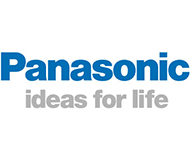Panasonic
Home » Resources » Case Studies » Panasonic

Business objective
Consumer electronics supplier Panasonic needed a better way of controlling product returns, which could see goods being sent back to its warehouse incorrectly by retailers.
Business benefits
- Reduced costs through efficiencies in freight, repair, and the correct and visible application of processes.
- Better service for retailers and consumers.
- Products sent to correct local repairer rather than turn up at the warehouse.
- Consistent process by all retailers and other agents handling Panasonic returns.
Panasonic gets smart solution for product returns
Panasonic required an alternative solution to the paper-based process of handling product returns, which was causing problems for their warehouse staff, finance department, retailers and consumers…
The challenge
A headache for many manufacturers of consumer goods is providing a simple way for everyone in the supply chain to handle product returns.
It’s a particular problem for consumer electronics suppliers, whose goods are often complex and expensive which means each return has many decisions and many players (freight, retail, repair, recycler, manufacturers departments etc.) all making decisions and all unable to easily see what the others have done.
For Panasonic, and the retail chains it supplies, this was causing an expensive confusion of returned goods arriving at Panasonic’s warehouse without the proper checks by retailers and without complete paperwork.
Most businesses can efficiently manage forward logistics, but when they attempt to throw the supply chain into reverse, the wheels often start to wobble. There are many reasons why.
For one thing, retail may be a seven-days-a-week activity, but manufacturer / distributor operations management isn’t. Also, high retail staff turnover and prevalence of part-timers mean stores are often better equipped for selling goods than taking them back for repairs or refunds.
On top of that, consumer electronics requires knowledge of scores of brands, products and models with varying warranty terms and procedures for return or repair.

The solution
Panasonic has found a solution in RTL™ — or Round Trip Logistics® — from supply chain and logistics specialist B2BE (formerly called The ECN Group in New Zealand).
RTL™ has simplified the process by allowing manufacturers like Panasonic to put their policies and rules for numerous products on a single website which works out the right actions for the return in the website and can also have multiple suppliers doing the same – thus allowing retailers and others to view and use one site. Panasonic has been quick to adopt RTL and is gradually bringing its retail partners onto the system.
Panasonic general manager of operations Philip Jayne says product returns are a headache for everyone in the supply chain. So an online service that applies consistent rules and is available to retailers when the Panasonic warehouse is closed over the weekend is a big advance.
“Managing returns is an important part of the business because retailers could otherwise return products without the necessary checks. Before RTL retailers could send returns back for any reason. We tried to put controls around that but we still got a lot of product that turned up at our warehouse without any paperwork,” Jayne says.
“Retailers have to try to keep staff informed about how different brands handle returns. One of the benefits of this system will be you go to the one website and all suppliers’ policies, all their steps and procedures, are all laid out for them and they just have to put the data in the web site where RTL will work out the right actions for them.”


The outcome
For Panasonic, the system has introduced more rigour and efficiency to the processing and payment of credits. Retailers and repair agents have also gained visibility of the process.
Panasonic tried out RTL with retailer Appliance Shed, which has three Auckland stores. John Green, who looks after returns for the chain’s Glenfield store, gives the system a ringing endorsement.
“We were one of the first stores to adopt the system and my impression of it is nothing but positive. If a customer has a problem with a product, I can just work through the website and it will suggest steps to check whether it’s a real fault or a problem with set-up,” says Green.
“For a weekend, if you get a customer with a problem that you’re not quite sure how to handle, the website will give you suggestions of how to tackle it. It will give you a decision there and then about whether a product needs to be repaired or replaced, whereas otherwise you’d have to tell the customer to wait till Monday,” Green says.
“In that respect it’s very satisfying for both the customer and ourselves.”
“In a way it helps me sell Panasonic because I can recommend it as a company because of the excellent help I get from the system. It would help me greatly if I had a system like this for all of my products.”
John Green, Appliance Shed.
Jayne says Panasonic have been able to input business rules into RTL for thousands of their products, with prompts for the retailer to eliminate issues caused by the end user. The system then leads the retailer down the right repair or replacement path, depending on product type, price and warranty terms.
“A key benefit is that rather than a retailer shipping a product back to our Auckland warehouse from Invercargill, say, if there’s an authorised service centre a mile down the road, it will ensure it goes there.”
That brings much-needed control and visibility to a process that was plagued by incomplete paperwork and wasted freight movements. “If you have product roaming around the countryside without paperwork, things can go missing. Then you end up in an argument with the retailer as to whose responsibility it is and who bears the cost.”
For consumers, it means faster repair turnaround times, and on-the-spot replacements for products below a certain price. “If the fault is something the customer is doing wrong, the self-repair prompts in the system will solve the customer’s problem, in which case the store will turn them around very quickly, satisfy their needs and look like all-round good blokes for doing it.”
Jayne estimates 10 to 20 per cent of returns are not the result of a faulty product but of a “user fault”.

Panasonic also have commercial clients who buy product direct from Panasonic. As they don’t have a store to return product to, they call the Panasonic call centre. The call centre then uses RTL to process the return extending the benefits of the system to these commercial clients too.
Store returns are also an issue for Panasonic. This can be where the wrong product is delivered by Panasonic to a retailer or it gets damaged in transit. These returns are different to consumer returns and have different decision points and rules. RTL has a separate wizard for store returns which reflect the different rules Panasonic and its retailers have. However, just like consumer returns, RTL applies Panasonics rules to each store return via the same RTL web site.
Since the trial, Panasonic has brought about 80 100%-branded Appliance Connection and 50 Harvey Norman electrical stores on to the system, and is in talks with other leading retail chains.
“We’ve noticed already that a lot less product is coming back to our warehouse,” says Jayne. “A lot of it is going direct to local authorised service centres to be fixed, which obviously saves money and improves the service to the customer.”
Appliance Shed’s Green would be keen to see other suppliers adopt RTL.
“In a way it helps me sell Panasonic because I can recommend it as a company because of the excellent help I get from the system.
“It would help me greatly if I had a system like this for all of my products.”